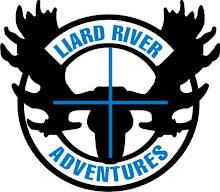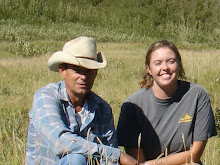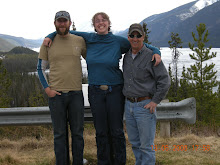2 months today. Wow. Both fast and very slow at the same time! Hard to believe that on January 4th I had my 2 backpacks with me and was leaving the Island at 4:15am, heading to the airport with the sun at my back and then making my way down to Oklahoma for my holidays. I can definitely say this is not like any other holiday I have ever been on in my life before! What a ride it is! What a lot of paperwork and signatures on things!
Every season when we would come out of winter training and start to head into the shorter distance races, I would have a challenge adjusting to the higher stroke rates and the fast firing of my alactic and lactic anaerobic systems. It used to be the same after sprint season when we moved into head races with their heavy loads and lactic acid soaked muscle demands. I think that being here at school is like a combination of both types of training. Rapid quick firing for homework, exams, tests and presentations that are immediate but long term memory for reading papers, synthesizing and thinking more than I've ever thought about science before. It is all fantastic and much like rowing, a very intense addiction that I have come to realize. Just like when I was rowing and couldn't get enough calories into me, I can't stop surrounding myself with the amazing science, papers, texts, books and discussions that are all giving me the opportunity to truly become a scientist.
2 months in America. I try not to miss Canada too much but it does happen. Really, the longest I've been away but at the same time, I am so busy and pre-occupied with school and how I can apply what I am learning back home that it is not as hard as it could be. Although, it's trappers rendezvous up in Nellie this week and I'm missing my logging sports partner and all the great festivities that are happening in the great white north. Living conditions here are challenging but doable.
2 months in America. Never thought that I would say that line! As I was between classes today I had the opportunity to enjoy a short amount of sunshine and there were 2 things that came to me. One being what my good friend Mike Keefer, ethnobotanist in the East Kootenays, said to me last spring "knowledge is power" and the other being sacrifice. The best things in life always come at a price.
I have recently had the opportunity to experience first hand the differences between the Canadian and American health care systems. It is a different concept to pay out of pocket to see a medical practitioner, but I am very thankful for the kindness I have received and for the assistance in further recovery from my knock on my head last year. I am thankful for the knowledge and care of the doctor here on campus. I also very thankful for the good people in my lab and that very wonderful grad students who are sharing this journey and who I hope will come up to the Boreal one day.
These good folks include new friends who also work under Sam. Stephen Winter (http://nrem.okstate.edu/grads/winter.html) would be one of those good folks who has helped me out massively. Brady Allred is also on that list of amazing new friends. Both Brady and Steve are working on their PhDs in the pyric herbivory world. Wesley Sprinkle, another gradutate student, is the closest connection I have with Canada as his mum is from Fort McLeod, Alberta, close to the Big Coulee Ranch and Head Smashed in Buffalo Jump where I first lived. Ray Moranz is another grad student who is doing very interesting work on butterflies and is someone who has an equal amount of passion to me I believe (http://nrem.okstate.edu/grads/moranz.html)! Emily Hiatt and Ilana Bloom-Cornelius are my 2 good buddies and are graduate students working with Sam as well on the fire-grazing interaction. Ryan Limb is a research specialist working in our crew as well.
Check out http://nrem.okstate.edu/facultyandstaff.html. Valerie Cook and Mitch Greer make up the remainder of our lab and are by far 2 of the funniest and funnest Americans I have ever met! I would say that these good folks are joined by Andy Crosby (http://nrem.okstate.edu/grads/crosby.htm), Tracy and Stewart Wilson, Curtis Lilly, and John Polo as really great classmates and wonderful people to be around.
Since I'm on a role with naming names, in case you are interested in seeing who my professors are, here is their role call:
Sam - Special Topics in Range Management - http://nrem.okstate.edu/faculty/Fuhlendorf.html
Rod Will - Production Ecology in Forested Ecosystems - http://nrem.okstate.edu/faculty/will.html
Mark Gregory - Database and GIS - http://nrem.okstate.edu/faculty/gregory.html
Mike Smith - Statistics - http://www.okstate.edu/ag/asnr/hortla/faculty/fruits.htm
And because he let me into his fire class - John Weir http://nrem.okstate.edu/faculty/Weir.html.
All in all, this is a really great group to work with and I'm just proud to be part of the team!
The books that are staring at me staring at them:
1. Range Management - Holechek et al
2. Fire and Plants - Bond and van Wilgen
3. Ecological Implications of Livestock Herbivory in the West - Vavra, Laycock and Pieper - Society of Range Management
4. Getting to know ArcGis desktop - second edition
5. Grass: In search of human habitat - Joe Truett, 2010
pp 170 - 173
"Dr. Sam Fuhlendorf, range professor at Oklahoma State University, spreads odd notions about ranching in a part of the country where unconventional ideas get the same critical scrutiny as a cow wearing an altered brand ... Hailing from my home state and like me a product of Texas A&M, Sam looked and talked like one of the boys. But he turned out to be a maverick. One of the most egregious sins committed by Sam came to my attention in an article he published with colleague David Engle in 2001 in the journal BioScience. Packed with terms and concepts seldom tossed about in cowboy culture, it challenged what livestock growers had been doing out on the range for most of a century. Fuhlendorf and Engle titeld the article "Restoring Heterogeneity on Rangelands: Ecosystem Management Based on Evolutionary Grazing Patterns." The introduction gave the theme: "We propose a paradigm that enhances heterogeneity instead of homogeneity to promote biological diversity and wildlife habitat on rangelands grazed by livestock."... we should encourage spatial heterogeneity. The key is to manage for variety in plant species, plant structure, and grazing pressures within pastures. Forget climax. Think patchwork. EMBRACE DISTURBANCE... Burning, for instance, attracts grazing for several years afterward. Periodic patch burning sets in motion a self-perpetuating and shifting mosaic ... Bob Hamilton practices on the ground what Fuhlendorf preaches in the university classroom and at rangeland conferences. Bob manages the Tallgrass Prairie Preserve in northeastern Oklahoma. The preserve, owned by the Nature Conservancy, runs bison instead of cattle..."
6. Foundations of Ecology: Classic papers with commentaries
7. Physiology of Woody Plants, 2nd Edition - Kozlowski and Pallardy
9. Plant Ecology - Clements and Weaver
Plus new arrivals today from Amazon.com (which I have an addiction to):
1. Landscape Ecology in Theory and Practice: Pattern and Process by Monica Turner, Robert Gardner and Robert O'Neil
2. Foundation Papers in Landscape Ecology by John Wiens, Michael Moss, Monica Turner and David Mlandenoff
3. The Masterworks of Charles M. Russell: A Retrospective of Paintings and Sculpture
Onwards and upwards.
Subscribe to:
Post Comments (Atom)











No comments:
Post a Comment